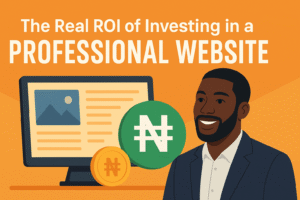In the world of online business, speed is money. A slow-loading website doesn’t just frustrate visitors — it costs you real sales. According to Digital Silk, a site that loads in five seconds instead of one can lose up to 90% of potential traffic. The reality is simple: if your website takes too long to load, customers will click away to your competitors.
The Data Behind Website Speed and Sales
Here are some eye-opening statistics that show the direct relationship between page speed and revenue:
47% of users expect a page to load in two seconds or less (Akamai Study).
1-second delay can reduce conversions by 7% (Neil Patel).
53% of mobile visitors will leave a site if it takes longer than three seconds to load (Think With Google).
If your eCommerce store makes $10,000 per day, a 1-second delay in load time could cost you over $250,000 annually in lost sales.
Why Speed Boosts Sales
Better User Experience
Fast websites keep visitors engaged. A smooth, quick experience encourages them to browse more products and make purchases.Higher Search Engine Rankings
Google uses page speed as a ranking factor. A faster site increases your visibility in search results, driving more organic traffic.Reduced Bounce Rates
A high bounce rate means visitors leave after viewing only one page. Faster load times reduce bounce rates, keeping customers on your site longer.Improved Mobile Performance
With more than 60% of traffic coming from mobile devices, a fast-loading, mobile-optimized website is crucial for capturing sales on the go.
How to Improve Your Website Speed
If your website is slow, you can optimize it for speed by:
Compressing images with tools like TinyPNG.
Using a content delivery network (CDN) like Cloudflare.
Enabling browser caching so repeat visitors load your pages faster.
Upgrading your hosting plan to a faster server.
Minifying CSS, JavaScript, and HTML to reduce file sizes.
You can check your current page speed using Google PageSpeed Insights.
Case Study: How Speed Increased Sales by 15%
An online clothing store reduced its homepage load time from 4.8 seconds to 1.9 seconds. The result?
15% increase in sales
22% increase in page views
12% drop in bounce rate
This example shows that speed optimization is not just a technical fix — it’s a growth strategy.
The Bottom Line
Your website speed is directly linked to customer satisfaction, search rankings, and sales. By investing in speed optimization, you’re not just improving your site’s performance — you’re increasing your bottom line.
If you want to boost your website speed and sales, consider hiring a professional web developer or a performance optimization specialist.



